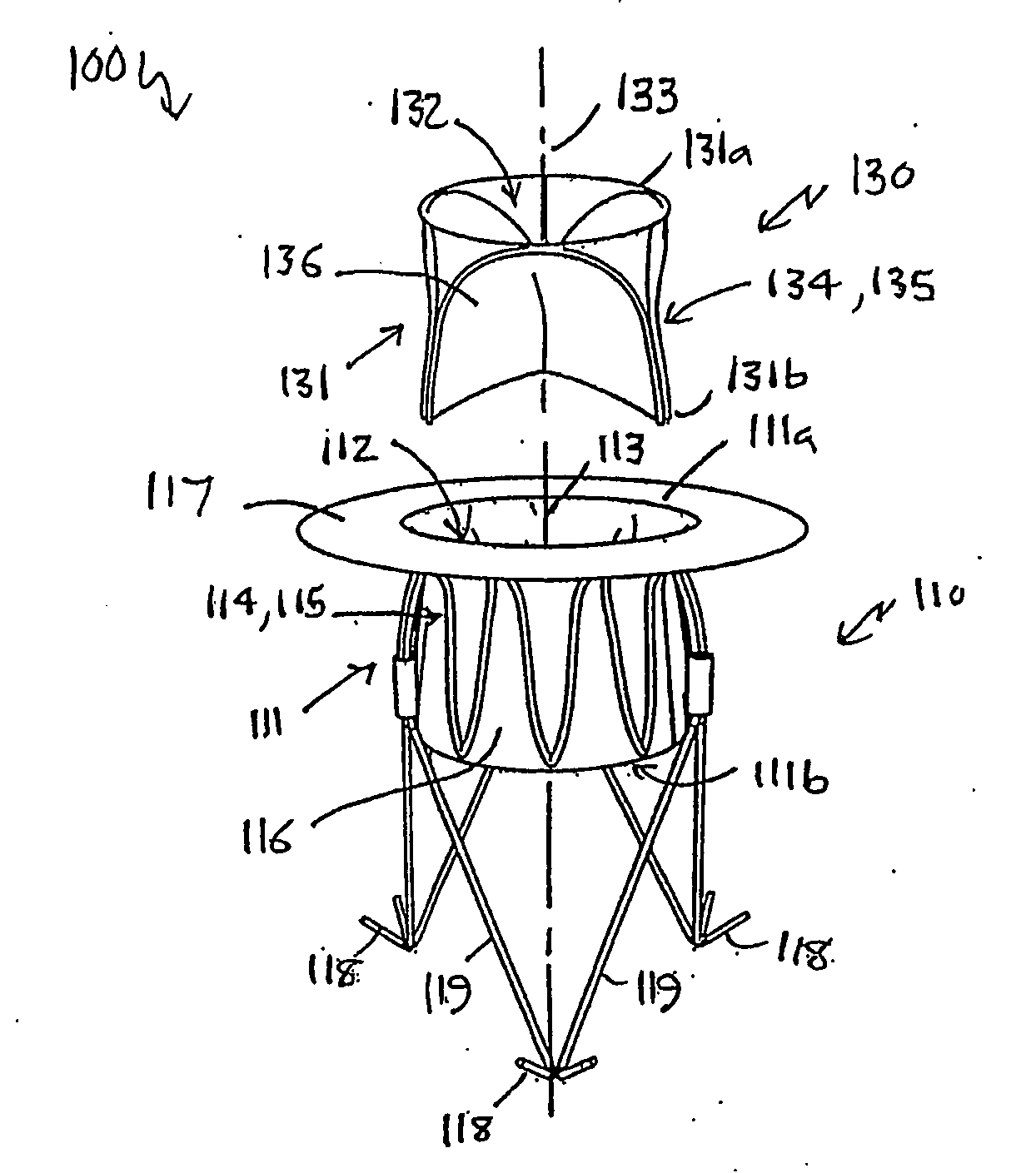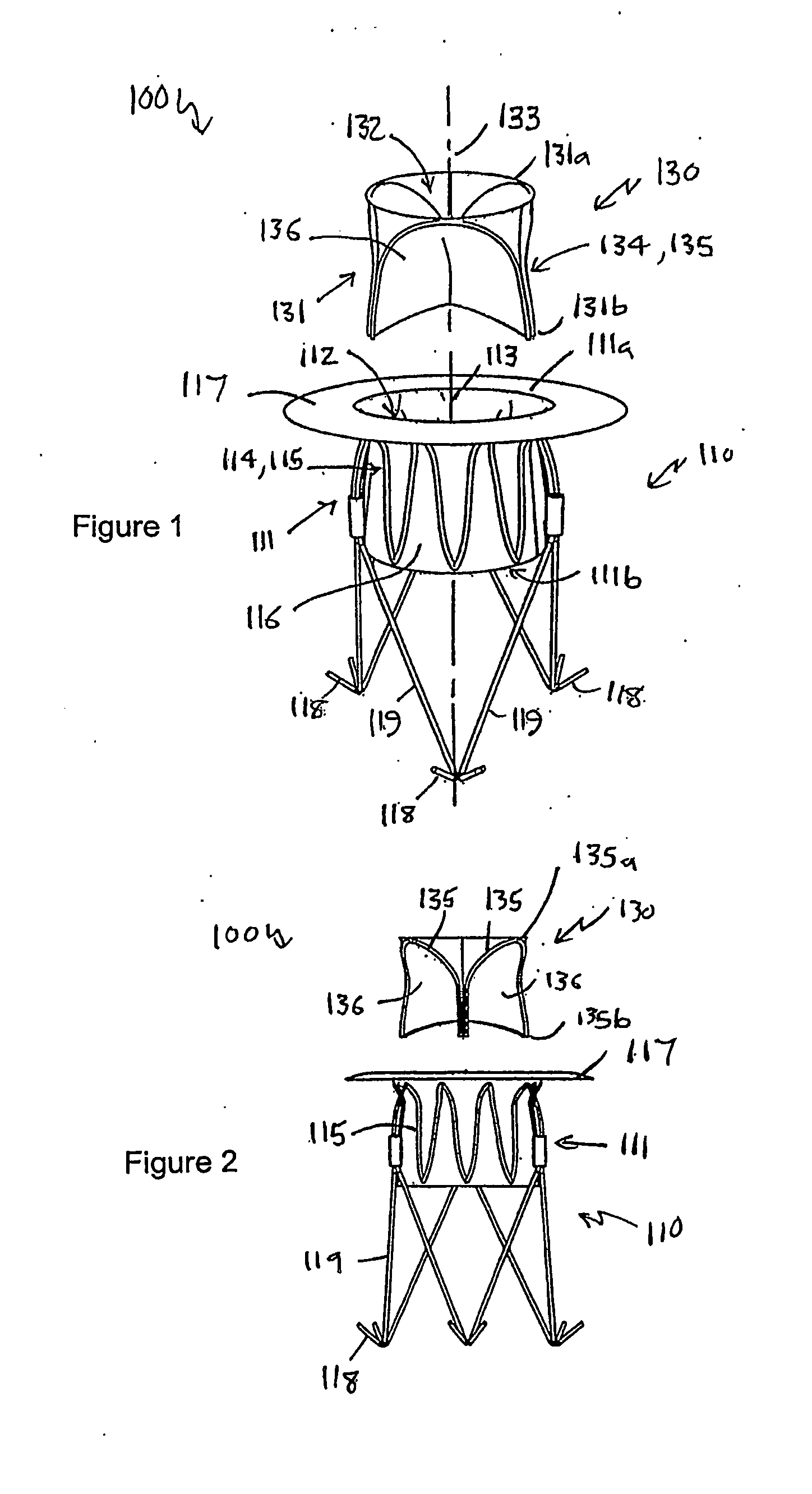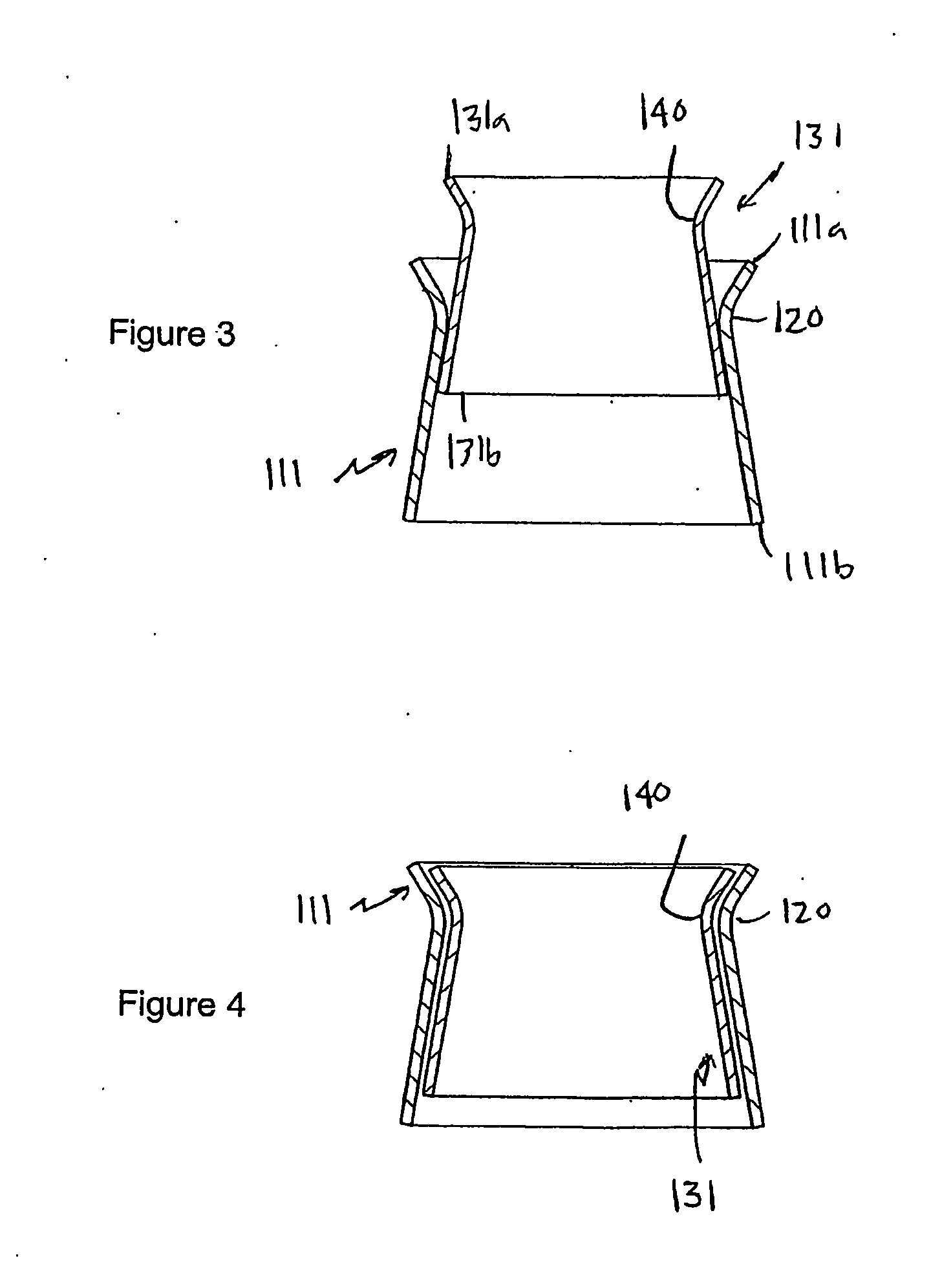Heart valve prosthesis and method
a heart valve and prosthesis technology, applied in the field of heart valve prosthesis, can solve the problems of valve leaking, valve replacement, and death, and achieve the effects of reducing the risk of heart valve leaking and requiring valve replacemen
- Summary
- Abstract
- Description
- Claims
- Application Information
AI Technical Summary
Benefits of technology
Problems solved by technology
Method used
Image
Examples
first embodiment
[0082]Referring to FIGS. 1 to 4 of the accompanying drawings, a heart valve prosthesis 100 is a two-component assembly, comprising a housing component 110 and a valve component 130. The heart valve prosthesis 100 is described here in terms of a mitral valve prosthesis for replacing a failed or failing mitral valve, however the heart valve prosthesis is also applicable to other heart valves including, in particular, the tricuspid valve.
[0083]The housing component 110 includes a housing body 111 that has a housing body first end 111a, a housing body second end 111b, and a housing passage 112 extending between the housing body first and second ends 111a, 111b along a longitudinal housing axis 113. As will be discussed further below, the housing body 111 is configured to be located adjacent to and communicating with the native mitral valve orifice of the heart with the housing body second end 111b located within the left ventricle and the housing body first end 111a located adjacent to ...
fifth embodiment
[0123]Various other forms of securing the various heart valve prostheses described above are also envisaged. For example, the valve component may be configured with ventricular or atrial prongs to assist in directly fixing the valve component to the structure of the heart. The valve body and housing body may also be tapered so as to act as a plug that cannot migrate through the heart valve orifice, with an anchoring mechanism being located on that side of the valve orifice through which the narrower end of the housing body and valve body protrude. For example, with the heart valve prosthesis 500 of the fifth embodiment described above in relation to FIG. 22, the atrial end of both the valve body and housing body could be narrower than the valve orifice and the ventricular end of the valve body and housing body, with the anchor device 541 and anchor line 542 acting to retain the heart valve prosthesis partly within the heart valve orifice in a plugged state. In such an arrangement, t...
seventh embodiment
[0125]a two component heart valve prosthesis, in the form of an aortic heart valve prosthesis 600, and an associated aortic heart valve replacement procedure will now be described with reference to FIGS. 24 through 29.
[0126]Referring firstly to FIGS. 24 and 25, the housing component 610 of the aortic valve prosthesis 600 comprises a generally tubular housing body 611 that has a housing body first end 611a, a housing body second end 611b and a housing passage 612 extending between the housing body first and second ends 611a, 611b along a longitudinal housing axis 613. The housing passage 612 is double tapered, with the housing passage 612 being wider at the housing body first and second ends 611a, 611b than in the central neck region 620 of the housing passage 612. This double tapering of the housing passage 612 assists in positioning and retaining the valve component 630 as will be discussed further below. The housing component 610 is sized and shaped to be located within the ascend...
PUM
 Login to View More
Login to View More Abstract
Description
Claims
Application Information
 Login to View More
Login to View More - R&D
- Intellectual Property
- Life Sciences
- Materials
- Tech Scout
- Unparalleled Data Quality
- Higher Quality Content
- 60% Fewer Hallucinations
Browse by: Latest US Patents, China's latest patents, Technical Efficacy Thesaurus, Application Domain, Technology Topic, Popular Technical Reports.
© 2025 PatSnap. All rights reserved.Legal|Privacy policy|Modern Slavery Act Transparency Statement|Sitemap|About US| Contact US: help@patsnap.com



